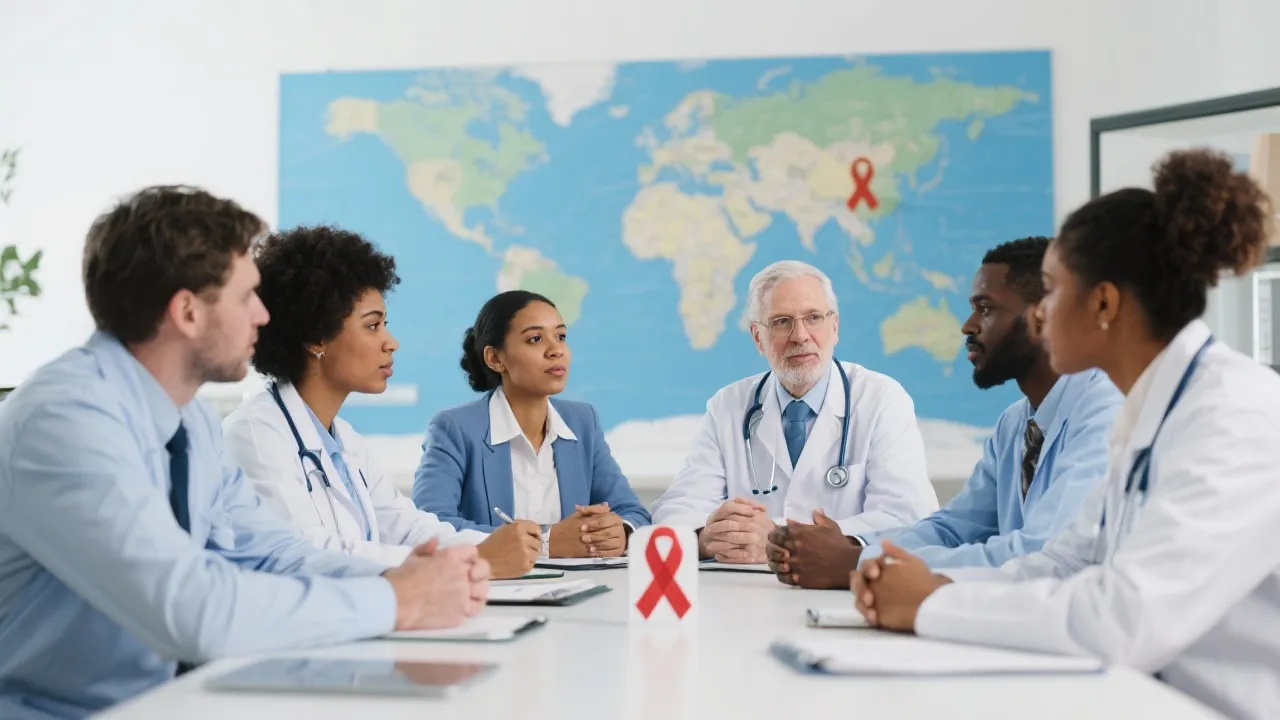This guide delves into the strategic approaches developed to combat HIV/AIDS, a global health crisis that continues to affect millions worldwide. It explores prevention methods, treatment options, and the socio-economic factors influencing the disease's spread. Highlighting effective global and local initiatives, the article provides a comprehensive look into modern strategies that aim to reduce the prevalence and impact of HIV/AIDS.

Human Immunodeficiency Virus (HIV) and Acquired Immunodeficiency Syndrome (AIDS) represent significant global health challenges. As millions continue to be affected, it becomes crucial to examine the strategies developed to alleviate HIV/AIDS and diminish its pervasive impact worldwide. These strategies encompass prevention, treatment, socio-economic engagement, stigma reduction, and active involvement from individuals as well as organizations. This multidimensional approach is aimed not only at combating the virus but also at addressing the broader implications of living with HIV/AIDS.
HIV attacks the body's immune system, specifically the white blood cells known as CD4 cells, which are crucial for warding off infections. The virus irreversibly alters these cells, resulting in a weakened immune system. Without treatment, HIV reduces the number of CD4 cells, making the body more vulnerable to infections and diseases. If left untreated, HIV can progress to AIDS, the very severe phase of HIV infection. At this stage, the immune system is severely damaged, leading to opportunistic infections, certain cancers, and ultimately, death. People living with HIV may show no symptoms for years, which is why regular testing and awareness are essential components of prevention strategies.
Prevention remains the cornerstone of combating HIV/AIDS. Strategies include comprehensive education, safe sex practices, harm reduction for substance use, and prophylaxis for at-risk populations. Efforts to normalize testing and reduce stigma are critical. These strategies require collaboration across various sectors, including healthcare, education, social services, and community organizations. Here are some key components of global strategies for HIV/AIDS prevention:
Antiretroviral therapy (ART) has revolutionized the treatment of HIV/AIDS. It helps maintain health and prevent transmission. By significantly reducing the viral load in individuals living with HIV, ART enables them to live longer, healthier lives. Here are some detailed features of current treatment strategies:
The effectiveness of strategies to alleviate HIV/AIDS often depends on understanding and addressing socio-economic and cultural factors influencing the epidemic. These factors interplay significantly to shape individuals' decisions regarding prevention and treatment:
Organizations play integral roles in the global fight against HIV/AIDS. Examples include the World Health Organization (WHO), UNAIDS, and numerous non-governmental organizations (NGOs). These organizations work towards various goals, including:
While significant progress has been made, challenges remain in completely eradicating HIV/AIDS. Continued innovation and adaptation of strategies to new challenges, such as drug-resistant strains and reaching underserved populations, are essential. The emergence of Multi-Drug Resistant (MDR) strains of HIV poses a difficult challenge for clinical management. Adapting treatment regimens to counter such resistance and ensuring that health care workers are equipped with the latest knowledge are imperative to maintaining control over the epidemic. Further, the COVID-19 pandemic severely disrupted HIV services worldwide, highlighting the fragility of healthcare systems and the need for more integrated health service approaches.
Future perspectives on HIV/AIDS strategies must involve a holistic view of health that intersects physical, mental, and social well-being. Policymakers are encouraged to adopt a “health in all policies” approach that recognizes the links between health and other societal factors, including poverty, inequality, and education. Enhanced data collection and surveillance systems will also allow for better-targeted interventions, understanding trends, and measuring progress effectively.
| Strategy | Global Implementation | Challenges |
|---|---|---|
| Education and Awareness | Widely implemented through schools and media. | Cultural sensitivity and reaching remote areas. |
| ART Access | Widespread in developed nations, improving in developing areas. | Cost and distribution in low-income regions. |
| PrEP | Growing adoption in high-risk regions. | Altering behaviors and consistent use. |
| Needle Exchange Programs | Established in many urban areas; ongoing expansion is needed. | Community resistance and policy support. |
| Stigma Reduction Initiatives | Varies widely; some success stories in certain locales. | Deeply ingrained social norms that hinder progress. |
The main focus includes prevention, treatment access, education, and minimizing socio-economic impacts. Different strategies are tailored to address specific regional needs and available resources.
ART is highly effective in controlling the virus and preventing its transmission when the regimen is strictly followed. Individuals adhering to ART can expect to live normal lifespans, maintain good health, and play an active role in their communities.
Cultural norms significantly affect the success of prevention and treatment programs. Tailored interventions that respect cultural sensitivities can improve buy-in from community members, leading to more effective health outcomes.
Combating stigma requires community engagement, education, and advocacy. Public campaigns showcasing positive narratives about people living with HIV, as well as involving those individuals in outreach efforts, can greatly increase understanding and acceptance.
Regular testing is vital for early diagnosis, which can improve health outcomes, facilitate timely treatment, and lower transmission rates. It helps individuals know their status and take appropriate steps to maintain their health.
Explore the Tranquil Bliss of Idyllic Rural Retreats

Ultimate Countdown: The 20 Very Legendary Gaming Consoles Ever!

Affordable Full Mouth Dental Implants Near You

Discovering Springdale Estates

Embark on Effortless Adventures: Unveiling the Top in Adventures Made Easy Outdoor Equipment

Unlock the Full Potential of Your RAM 1500: Master the Art of Efficient Towing!

Dodge Ram: Redefining the Future of Full-Size Trucks with Unmatched Power and Innovation

Get New Phones Without Plans Easily

Smart Strategies to Slash Costs on Your Roof Replacement Endeavor
